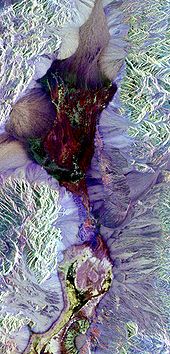
Back قياس الاستقطاب Arabic Polarimetria Catalan Polarimetrie Czech Polarimetrie German Polarimetría Spanish قطبشسنجی Persian Polarimétrie French Polaraiméadracht Irish Polarimetria Hungarian Polarimetria Italian

Polarimetry is the measurement and interpretation of the polarization of transverse waves, most notably electromagnetic waves, such as radio or light waves. Typically polarimetry is done on electromagnetic waves that have traveled through or have been reflected, refracted or diffracted by some material in order to characterize that object.[1][2]
Plane polarized light: According to the wave theory of light, an ordinary ray of light is considered to be vibrating in all planes of right angles to the direction of its propagation. If this ordinary ray of light is passed through a nicol prism, the emergent ray has its vibration only in one plane.
- ^ Mishchenko, M.I.; Yatskiv, Y.S.; Rosenbush, V.K.; Videen, G., eds. (2011). Polarimetric Detection, Characterization and Remote Sensing, Proceedings of the NATO Advanced Study Institute on Special Detection Technique (Polarimetry) and Remote Sensing Yalta, Ukraine 20 September – 1 October 2010, Series: NATO Science for Peace and Security Series C: Environmental Security. NATO Science for Peace and Security Series C: Environmental Security (1st ed.). Springer. ISBN 9789400716353.
- ^ Tinbergen, Jaap (2007). Astronomical Polarimetry. Cambridge University Press. ISBN 978-0-521-01858-6.
© MMXXIII Rich X Search. We shall prevail. All rights reserved. Rich X Search